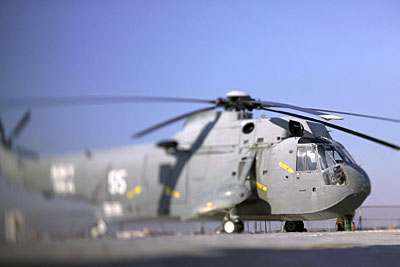Heavy Lift Engines
Feedsee Aviation : Heavy Lift Engines : General Electric provides main engines for Sikorsky's maritime helicopter
Heavy-lift helicopters are a type of rotary-wing aircraft that are designed to transport heavy cargo and numerous personnel, often in challenging environments. They are engineered with larger dimensions, higher power, and superior lifting capabilities compared to standard helicopters.
 In 2006, Sikorsky Aircraft selected General Electric Aviation to provide the CH-53K heavy lift helicopter's main engines. Sikorsky developed the CH-53K for the United States Marine Corps. The three-engine CH-53K replaced the CH-53E Super Stallion helicopter. The GE38-1B engine planned for the CH-53K was a derivative of the CFE738 commercial turbofan engine and the US Navy T407 turboprop engine. The Sikorsky CH-53E Super Stallion aircraft was the largest, most powerful maritime helicopter in the world. The Navy deployed them from amphibious assault ships to transport personnel and equipment, and to carry external cargo.
In 2006, Sikorsky Aircraft selected General Electric Aviation to provide the CH-53K heavy lift helicopter's main engines. Sikorsky developed the CH-53K for the United States Marine Corps. The three-engine CH-53K replaced the CH-53E Super Stallion helicopter. The GE38-1B engine planned for the CH-53K was a derivative of the CFE738 commercial turbofan engine and the US Navy T407 turboprop engine. The Sikorsky CH-53E Super Stallion aircraft was the largest, most powerful maritime helicopter in the world. The Navy deployed them from amphibious assault ships to transport personnel and equipment, and to carry external cargo.
Features of Heavy-Lift Helicopters
- High Load Capacity: Heavy-lift helicopters are designed to carry large amounts of weight, both in terms of cargo and personnel. Some of the most powerful models can lift loads of over 20,000 pounds.
- Powerful Engines: They have more powerful engines than standard helicopters, allowing them to carry heavy loads and perform complex maneuvers.
- Large Size: Heavy-lift helicopters are larger in size to accommodate more cargo and personnel. They often have wide, spacious cargo holds and multiple doors for easy loading and unloading.
- Special Equipment: Many heavy-lift helicopters are equipped with specialized features like cargo hooks for external loads, winches for hoisting, and reinforced landing gear.
Role of Heavy-Lift Helicopters in Moving Cargo and Personnel
- Military Operations: In military contexts, heavy-lift helicopters are essential for transporting troops, vehicles, and supplies to and from areas of operation. They can quickly and efficiently move heavy equipment, helping to establish or resupply military bases in remote or hostile locations.
- Disaster Relief: During natural disasters or humanitarian crises, heavy-lift helicopters are invaluable for delivering aid supplies, evacuating people from danger zones, and transporting relief personnel. They can reach areas inaccessible by ground transport, such as areas affected by floods, earthquakes, or landslides.
- Construction and Infrastructure: Heavy-lift helicopters play a crucial role in the construction of infrastructure in difficult-to-reach locations, such as remote wilderness, offshore oil rigs, or mountaintop sites. They can carry large pieces of construction material, equipment, and workers to and from these sites.
- Logging and Forestry: In the logging industry, helicopters are used to move cut trees from the harvesting site to processing areas, minimizing the impact on the environment compared to ground-based methods.
- Search and Rescue: Given their capacity to carry large teams and heavy equipment, these helicopters are often employed in search and rescue operations, especially in challenging terrains or weather conditions.
- Scientific Research and Exploration: For remote fieldwork in areas such as Antarctica or deep in the Amazon rainforest, heavy-lift helicopters can transport scientists, their equipment, and their samples.
- Aerial Crane Services: Acting as "flying cranes", these helicopters can move heavy and oversized objects, like air conditioning units, communication towers, or large artworks, in urban areas or places with limited ground access.
By combining the ability to carry heavy loads with the versatility and mobility of helicopters, heavy-lift helicopters have become an essential tool in a wide range of industries and operations.